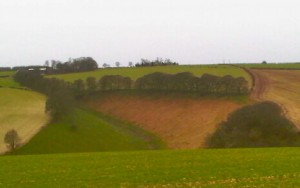This morning two buzzards and a red kite soared in interlocking circles in the warm air high above my garden.
Quite what this interaction of two distinct species meant is beside the point. We were looking at a very conspicuous example, as close to home as it could possibly be, of rewilding.
Technically the buzzard has reintroduced itself to my area, spreading quite rapidly up the M4 corridor to the Home Counties about 15 years ago. The red kite is a classic reintroduction, the progeny of a pioneer population released in Oxfordshire about 25 years ago. It is now so common that it would be the myopic traveller indeed who did not spot several on an hour’s journey through the counties north of London.
I think it’s a fair bet that the public would not want this exercise in turning back the ecological tide to stop with the red kite – the bird was hunted down in Victorian times. Given the chance to support more extensive rewilding, whether that be introducing individual species or creating landscape that is more amenable to nature, I believe they would take it, even if it requires public money.
The statistics around habitat destruction and pollution in the countryside hardly need to be need repeated. Time now to erect those metaphorical buffers, and start changing things. There are other promising case studies, apart from the red kite. The return of the beaver in several parts of England and Scotland is probably the most resounding. It cannot be long before the wolf is tentatively reintroduced in Scotland, the only wild creature capable of curbing the burgeoning deer population, which is very damaging to, in particular, emerging trees.
There is promise, too, in the government’s new environmental land management (ERM) proposals, a replacement to EU agricultural support designed to reward farmers for making improvements on their land that benefit nature. This could start sometime in 2024, although the pandemic could have an effect on funding.
A more benign form of agriculture that is good to nature would be welcome, but some campaigners have higher ambitions still. Craig Bennett, new CEO of The Wildlife Trusts, wonders how it might be if a third of the UK’s land was handed back to nature, accessible places people can get to easily from towns and cities. He’s making a ‘Nature Recovery Network’ his flagship pledge.
And new environmental body Heal Rewilding intends to take tracts of land and restore them to a nature-rich state which hardly exists outside some of the more precious nature reserves. It wants to raise around £7m for its foundation project ‘Heal South’, to be set up within the next two years.
It would buy an area of around 500 acres in Southern England, ecologically depleted land with low biodiversity, within reach of large urban populations, to be followed by more sites across the UK as funds grow. The organisation would reinstate natural processes, achieved elsewhere by reintroducing native ecosystem engineers, such as beavers. Heal says it will follow expert advice on what to do on the land it acquires. For example, grazing, browsing and rootling animals – cattle, ponies, deer and pigs would construct a mosaic of habitats by ‘working’ the land in different ways.
‘When ecosystems begin functioning better on our areas of rewilded land’, Heal says on its website, ‘we’ll have biodiversity hot-spots with healthy soil and booming invertebrate populations that can help kick-start nature’s recovery on surrounding sites in the landscape.’
Rewilding will have potential benefits for climate mitigation too. In its report on rewilding and climate breakdown, Rewilding Britain sets out the case for the restoration of natural processes to sequester carbon.
Wherever you travel in Britain, you will be able to spot suitable land for this type of project. There are fields that are never cultivated, because they are unsuitable for agriculture, or they are kept for horses, or the owner has aspirations to build houses on them. Some may genuinely want to restore them to nature but don’t know how. I know many such fields, within walking distance from my home, when nothing really happens apart from a few horses bouncing around, where the owner hangs on in the forlorn hope that the planners will let him build houses and make his fortune.
With so many warning signs about the loss of nature and the need to act on climate change mitigation, there’s never been a better time the people who own marginal land like this to offer it for sale at a decent price, to the lasting benefit of us all.

